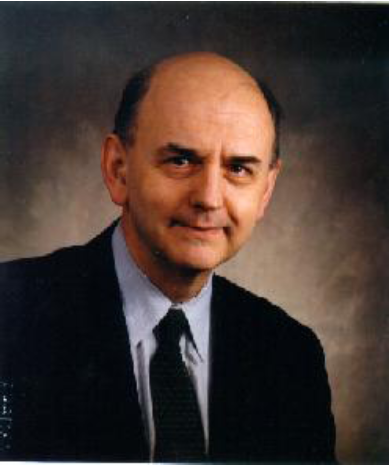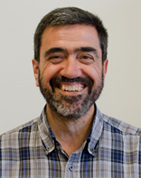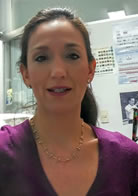Invited Speakers
PLENARY TALKS:
Prof. Yun Hang Hu
Department of Materials Science and Engineering, Michigan Technological University, USA
 |
Dr. Yun Hang Hu is the Charles and Carroll McArthur Chair Professor at Michigan Technological University. He is the AAAS Fellow, AIChE Fellow, and RSC Fellow. He is the President of IAHE Hydrogen Storage Division. He was the Chair of ACS Energy and Fuels Division. His research interests are in advanced materials and processes for energy. He has published more than 150 papers in prestigious journals and given more than 100 invited talks to international symposia. |
|
Speech Title: Advanced Electrode Materials for Solar Energy Abstract: Ideal electrode materials must possess both high electrical conductivity and large accessible surface area. Among all carbon materials, pristine graphene has the highest conductivity with large surface area. However, without a substrate, graphene sheets can readhere into graphite to lose surface area or crumple three-dimensionally with damaging conductivity. Therefore, it is a challenging task to solve contradiction between high electrical conductivity and large surface area for electrode materials. In the recent years, Prof. Hu’s group has designed several reactions to synthesize 3D porous alkali metals embedded carbon nanomaterials, which possess both high conductivity and large accessible surface area. Furthermore, those novel carbon materials exhibited excellent performance for dye-sensitized solar cells, perovskite solar cells, and other energy devices. Those findings will be discussed in this plenary talk. |
|
|
Keywords: Electrode, Alkali metal-embedded Carbon, Solar cells |
|
Prof. Horst Kisch
Institute of Inorganic Chemistry, University of Erlangen-Nürnberg, Erlangen, Germany
 |
Horst Kisch studied chemistry at the University of Vienna, Austria. From 1968 to 1984 he worked at the Max-Planck-Institut für Strahlenchemie (now Max-Planck-Institut für Chemische Energiekonversion) in Mülheim a.d. Ruhr, Germany. After his "habilitation" in Organic Chemistry at the University of Dortmund, Germany, he became Professor of Inorganic Chemistry at the University of Erlangen-Nürnberg, Germany, in 1984. He retired in 2008. His interests developed from catalytic activation of 1,2-diazenes over weak charge-transfer interactions in redox active ion pair complexes to semiconductor photocatalysis. On the latter topic he wrote a first text book. |
|
Speech Title: Mechanistic and synthetic aspects of semiconductor photocatalysis
|
|
|
Keywords: Photocatalysis; semiconductor powders, visible light |
|
Dr. Hugo Ignacio de Lasa
 |
Hugo I. de Lasa is a Professor at the Department of Chemical and Biochemical Engineering, at the University of Western Ontario. Prof. fe Lasa graduated in 1971 with a Doctoral degree from the Université de Nancy in France. Hugo de Lasa received in 2004 an Honoris Causa Doctoral degree in Chemical Engineering from the Universidad Autonoma de Zacatecas, Mexico. Prof. de Lasa is the author of 300-peer reviewed publications, 6 books, and 11 U.S. and Canadian patents. He has been actively involved in the training of graduate students with the successful supervision of 45 PhD and 31 MESc. Prof. de Lasa’s activities have been of key importance for furthering the understanding of the science and the technology of chemical reactors. |
| His original work deals with the application of chemical and photochemical reactor engineering to environmentally friendly processes and products. Prof.de Lasa is the author of the milestone book “Photocatalytic Reaction Engineering” published by Springer in 2005. Examples of Hugo de Lasa's inventions are the CREC-Riser Simulator, the Pseudoadiabatic Catalytic Reactor, the CREC-Optiprobes and the Photo-CREC reactors. In 2003, de Lasa founded Recat Technologies Inc (http://www.recattechnologies.com/) with the goal of commercializing CREC innovations. In 1998, Hugo de Lasa received the Research Excellence Prize from the Faculty of Engineering Science of the University of Western Ontario. In 2000, he was designated Fellow of the Chemical Institute of Canada. That same year, he was awarded the Medal of Research and Development from the Professional Engineers of Ontario. In 2001, Hugo de Lasa received the Award in Industrial Practice and in 2004, the R.S.Jane Lecture Award, both from the Canadian Society for Chemical Engineering. In 2005, Hugo de Lasa was inducted as a Fellow of the Canadian Academy of Engineering. In 2010, The American Chemical Society published a special Industrial Engineering Chemistry Research Festschrift Issue in Hugo de Lasa’s honour. | |
INVITED TALKS AND INVITED SPEAKERS:
Dr. Rodolfo Zanella
Centro de Ciencias Aplicadas y Desarrollo Tecnológico, Universidad Nacional Autónoma de México. Mexico City
 |
Rodolfo Zanella earned a Master’s degree in Chemical Engineering (2000) by UNAM and a Ph. D. degree in Process Engineering and Catalysis from the Université Pierre et Marie Curie-Paris VI, France in 2003. Currently he is Director of the Center for Applied Sciences and Technological Development (CCADET)-UNAM. He has published 84 research papers that have been cited 3000 times (H index 24), 5 book chapters and has been in charge of 18 founded projects. He has supervised 24 BSc students, 11 MSc students, 4 doctorate students and 6 postdoctoral fellows. |
|
Photocatalytic water splittingover titania modified by metal or metal oxide nanoparticles
|
|
|
Keywords: hydrogen, gold, photocatalysis |
|
Prof. Narcís Homs
Department of Inorganic and Organic Chemistry, Inorganic Chemistry section, University of Barcelona, Barcelona, Spain
 |
Narcís Homs completed his PhD at UB in 1984; he carried out postdoctoral studies at CNRS Villeurbanne (France) (1985-86) and at UC Berkeley (USA) (1988). He is full professor at UB and the co-director of the Catalytic Materials group. He teaches in different degrees and masters courses related with materials, nanoscience and renewable energy. He has published more than 100 papers in reputed journals, directed 9 PhD thesis, co-authored 3 patents and contributed to 7 chapter books. |
|
Speech Title: Behaviour of Pt/TiO2 Catalysts with Different Morphological and Structural Characteristics in the Photocatalytic Conversion of Ethanol Aqueous Solutions.
|
|
|
Keywords: Renewable H2; Photocatalytic C-C formation; Pt/anatase photocatalyst |
|
Dr. Juan Manuel Peralta-Hernández
Department of Chemistry, Universidad de Guanajuato, Mexico
 |
Dr. Peralta-Hernández obtained his Bachelor's degree in Chemical Engineering in 2000 by the Instituto Tecnologico de Toluca. Doctor in Electrochemistry in 2007 under the direction of Prof. Luis Godínez Mora-Tovar by CIDETEQ. From January 05, 2015 until today, he has held a full Professor of Chemistry Department at the Universidad de Guanajuato. Developing research in several advanced oxidation electrochemical processes such as electrooxidation, electro-Fenton, photoelectro-Fenton and ferrate ion. |
|
Since 2012 he is an Editorial Member of Elsevier's Sustainable Environment Research journal. He has conducted 6 doctoral theses, published 55 peer-reviewed articles in JCR journals, two books and eleven book chapters and 4 patents. In Scopus there are about 1173citations of his articles with an index h = 20. Speech Title: Environmental applications of coupled systems based on anodic oxidation/photocatalysis using TiO2 modified materials Abstract: Some approximates on the successful synthesis of Fe-N codoped Titania powders, using Degussa P25, salt of Fe (II), and Urea. Modified Titania-based materials were obtained using SEM, EDS, RAMAN, BET and diffuse reflectance UV-Vis spectroscopy measurements. The doping of TiO2 induced a shift in the absorption threshold towards the UV spectral range, obtaining catalysts with a greater photoactivity than the one of pure Degussa P25. Photocatalytic performance in codoped titania has been proven to be effective that was assessed through the degradation of blue BR aniline solutions via electrochemical oxidation and photocatalytic reaction, whose decolorization was evaluated using UV-Vis spectrophotometry, and concentration using HPLC determinations. Another experience is using TiO2 nanoparticles were electrophoretically deposited onto BDD. Hybrid BDD/TiO2 showed good electrocatalytic behavior of 0.50 M K4[Fe(CN)₆] by cyclic voltammetry. Photoelectrocatalysis of Acid Blue 80 dye with BDD/TiO2 anode upon 75 mA cm-2 UVA illumination (lmax = 365 nm) yielded much faster color removal and degradation than anodic oxidation with BDD or BDD/TiO2 in the dark. |
|
|
Keywords: TiO2, anodic oxidation, environmental applications |
|
Dr. Vicente Rodríguez González
Advanced Materials Department of the Institute for Scientific and Technological Research of San Luis Potosi, IPICYT-México.
 |
Dr. Rodríguez González is an Industrial Chemical Engineer by ESIQIE IPN (1999). He received the degree of Master of Science from the Universidad Autónoma Metropolitana Campus Iztapalapa (2001). His doctorate was conducted at the University Pierre et Marie Curie (Paris VI), France (2006) Dr. Vicente is the author of 62 international publications indexed with strict arbitration. |
|
Dr. Vicente leads the group Environmental Heterogeneous Catalysis and new nanostructured materials of IPICYT and serves as Guest editor of Catalysis Today and Hazardous Materials journals.
Abstract: Microorganisms related to human and plant health included certain bacteria, viruses, fungi and parasites. The infection depends on a complex sequence of biological events involving host, environmental conditions, chemical and physical interactions between the surfaces of the human or plant and the phytopathogenic microorganism. Most of microorganism shows resistance to conventional fungicides. This study proceeds with a concise discussion on assessing the effective inactivation of the phytopathogenic bacteria by means of electronic microscopy (SEM and HRTEM) and monitoring the changes in morphology of the microorganisms during the photocatalytic inactivation with different AgNP loadings using 1D titanate nanotubes. The photocatalytic method presents a non-invasive way to battle infection, practically with no generation of toxic by-products and as an eco-friendly way to control pathogenic microorganisms that could become of relevance in the near future. |
|
|
Keywords: Pathogenic Microorganisms; Silver-nanotubes, HRTEM and HAADF. |
|
Iliana E. Medina-Ramírez
Chemistry Department/Center of Basic Sciences/Organometallic and Materials Chemistry Lab, Universidad Autónoma de Aguascalientes, Aguascalientes, Mexico.
 |
Iliana E. Medina-Ramírez got her PhD in chemistry (organometallic and materials chemistry) from Tulane University in 2005. She has more than 10 years of research experience in the field of nano-structured materials (metallic, metal oxides and metal-chalcogenides), with particular interest in photocatalytic materials for environmental remediation and biomedical applications. She has published 56 papers in internationally peer review journals, 4 book chapters and is the co-editor of the book “Photocatalytic Semiconductors. Synthesis, characterization and environmental applications” Springer (Ed),. She has participated in more than 15 international conferences. |
|
She has supervised 30 BSc students, 10 MSc students and 4 doctorate students. She was awarded the best junior researcher prize (2007) and advanced researcher award (2nd place, 2011) at her current academic institution. She is a member of the System of National Researchers (Mexico) and co-organizer of the Mexico-China Workshop on Renewable Energy and Environment Remediation. Speech Title: Environmental and Biomedical Applications of Visible Light Active Photocatalytic Materials Abstract:
|
|
|
|
|